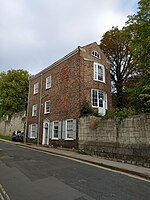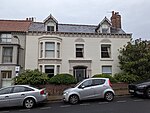St Mary's Abbey, York
1055 establishments in England11th-century establishments in England1539 disestablishments in EnglandBenedictine monasteries in EnglandChristian monasteries established in the 11th century ... and 9 more
Church ruins in EnglandMonasteries dissolved under the English ReformationMonasteries in North YorkshireRoman Catholic churches in YorkRuined abbeys and monasteriesRuins in North YorkshireScheduled monuments in YorkUse British English from September 2020William II of England

The Abbey of St Mary is a ruined Benedictine abbey in York, England and a scheduled monument.
Excerpt from the Wikipedia article St Mary's Abbey, York (License: CC BY-SA 3.0, Authors, Images).St Mary's Abbey, York
Museum Street, York Bishophill
Geographical coordinates (GPS) Address Website Nearby Places Show on map
Geographical coordinates (GPS)
| Latitude | Longitude |
|---|---|
| N 53.961388888889 ° | E -1.0880555555556 ° |
Address
Museum Gardens
Museum Street
YO1 7DJ York, Bishophill
England, United Kingdom
Open on Google Maps










